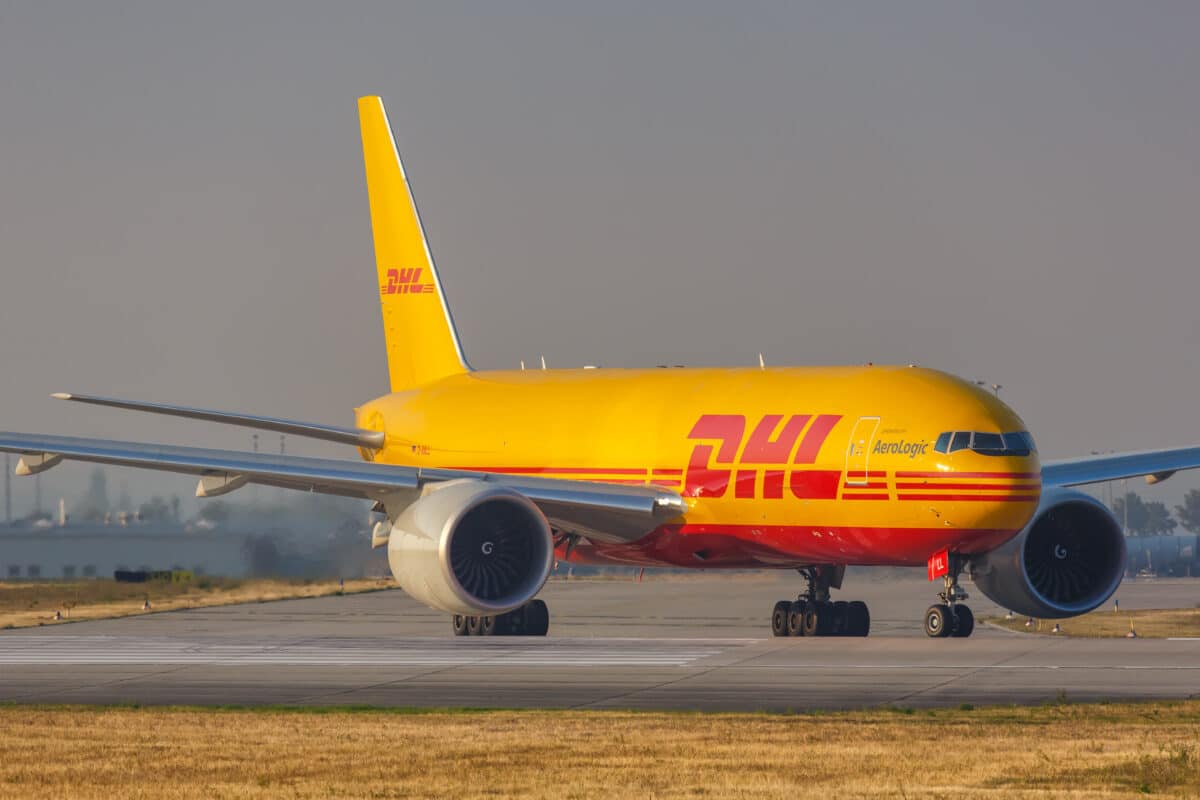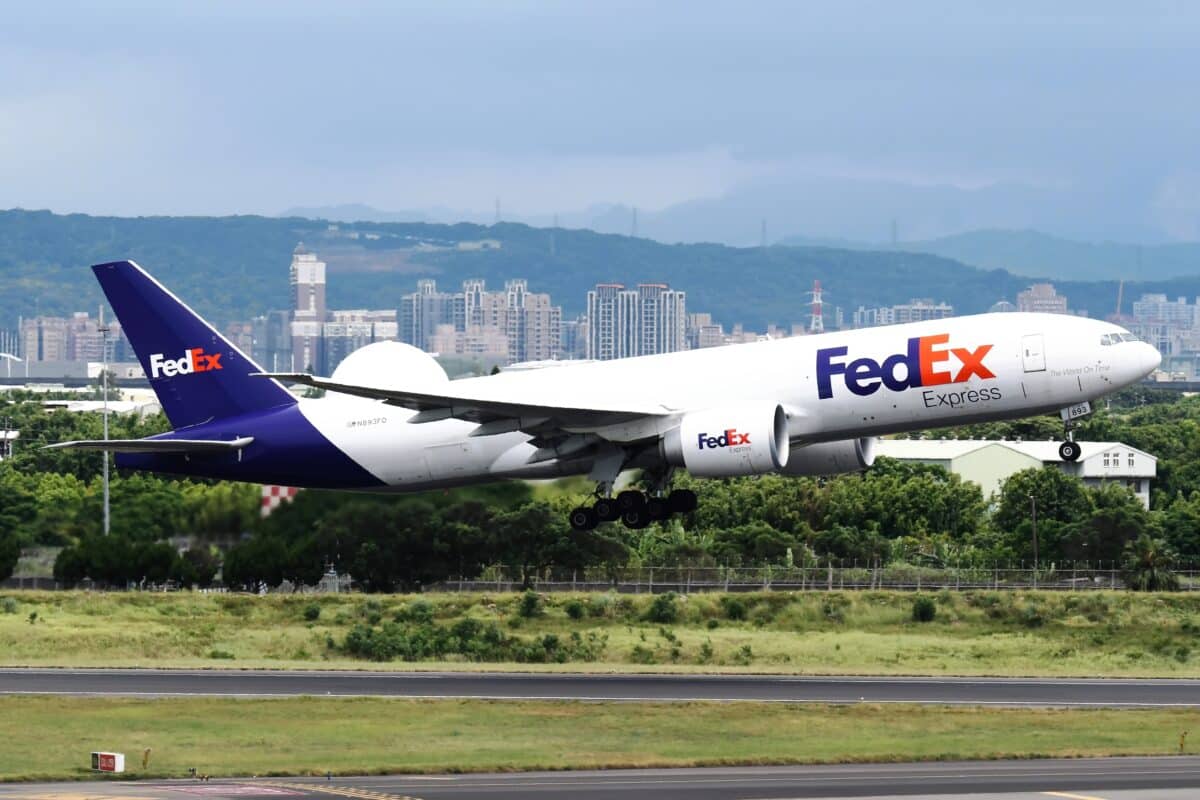
Commercial cargo planes like the Boeing 777f could be used to fight global warming. (Markus Mainka/Shutterstock)
In a nutshell
- Existing cargo jets like the Boeing 777F could be repurposed to spray cooling particles into the atmosphere, offering a faster and cheaper way to deploy geoengineering.
- Injecting sulfur dioxide at high latitudes and lower altitudes (around 13 km) could achieve about 35% of the cooling efficiency of specialized high-altitude strategies, but would require more particles and cause greater side effects like acid rain.
- Making geoengineering feasible with today’s aircraft could drastically shorten the deployment timeline, raising urgent questions about governance, risks, and the potential for premature or poorly coordinated use.
LONDON — The same planes delivering online orders today could one day deliver cargo to fight global warming. New research from University College London reveals that ordinary commercial jets could be repurposed to inject particles into the atmosphere to fight climate change, potentially bringing geoengineering from science fiction into reality far sooner than experts predicted.
A new study published in Earth’s Future reveals that existing aircraft could effectively deliver sulfur dioxide into the stratosphere at high latitudes, where the atmospheric boundary layer is lower than at the equator. This suggests that geoengineering, deliberately manipulating Earth’s climate system to counteract global warming, might be technically feasible without creating specialized aircraft, which experts previously assumed would be necessary.
This is actually achievable. Their team discovered that while this method isn’t as efficient as purpose-built high-altitude jets, it could still deliver meaningful cooling effects and substantially reduce barriers to making this happen.
How Ordinary Jets Could Cool the Planet
For decades, scientists have discussed stratospheric aerosol injection (SAI) as a potential emergency brake on climate change. The concept mimics large volcanic eruptions by releasing sulfur particles high into the atmosphere, where they reflect sunlight back into space and temporarily cool the planet. Until now, most experts believed this would require new, specialized aircraft capable of flying at extremely high altitudes of around 20 kilometers (approximately 65,617 feet).

But by injecting sulfur dioxide at polar latitudes (around 60° North and South), where the stratosphere sits lower in the atmosphere, existing commercial aircraft could do the job at altitudes of just 13 kilometers (approximately 42,651 feet), well within their current operating ranges.
The researchers conducted 41 short stratospheric aerosol injection simulations using the UK Earth System Model, varying the altitude, latitude, and season of injection. Their models showed that seasonal high-latitude injection with a standard Boeing 777F could achieve roughly 35% of the cooling efficiency of the high-altitude approach using specialized aircraft.
This means more sulfur dioxide would need to be injected to achieve the same cooling effect, about 21 tons annually compared to 7.6 tons with the specialized aircraft approach. The increased injection amounts would multiply side effects like acid rain and stratospheric warming.
Yet the possibility of using existing aircraft dramatically alters the timeline and accessibility of potential geoengineering deployment. Rather than waiting a decade or more for specially designed high-altitude aircraft to be developed and certified, commercial jets could be modified within years.
However, the researchers warn that if this technology becomes easier to use, more groups could try to cool the planet on their own, raising the risk of rushed or poorly coordinated attempts to change the climate.

Using climate models, the research team estimated that injecting 12 tons of sulfur dioxide annually at an altitude of 13 kilometers at 60° North and South during local spring and summer could produce global cooling of about 0.6°C. This would be enough to significantly slow climate change if maintained over decades.
The team calculates that a fleet of 102 modified Boeing 777F jets would be needed to deliver enough sulfur dioxide to cool the planet by 1°C. By comparison, Boeing currently manufactures about 36 of these aircraft annually.
Restricting injections to spring and summer in each hemisphere increases cooling efficiency by 39% compared to year-round injection. Doing so seasonally takes advantage of higher sunlight levels during these periods, maximizing the cooling effect of the reflective particles.
While high-latitude injection would produce a more polar-focused cooling pattern, the effects would still be global. This pattern could provide stronger cooling in Arctic regions, potentially helping to preserve sea ice, but might be less effective at cooling tropical regions where many vulnerable populations live.
There are a few cons to this approach, though. The lower altitude injections are substantially less efficient than high-altitude injections. Using existing aircraft would require injecting nearly three times as much sulfur dioxide to achieve similar cooling, significantly increasing side effects.
Governance Challenges
This also raises serious questions about who would control climate-altering technology. If changing the climate no longer requires special equipment, many more countries—or even private groups—could gain the power to do it.
We can look at this as both an opportunity and a warning. The technical barriers to cooling Earth are lower than we thought, but this doesn’t mean we should rush toward geoengineering. Careful consideration about governance, permission, and unintended consequences is needed before modified cargo planes start releasing particles into our atmosphere.
Paper Summary
Methodology
The researchers conducted 41 simulations using the UK Earth System Model (UKESM1), a sophisticated climate model that includes atmospheric, ocean, chemical, and aerosol components. Each simulation injected 12 tons of SO2 per year at different combinations of altitude (ranging from 12 to 20 km), latitude (30° to 70° North and South), and seasonal patterns. The simulations each ran for two years, with the researchers analyzing changes in aerosol optical depth, radiative forcing, and estimated cooling effects. They specifically focused on lower injection altitudes (around 13 km) that could be reached by existing commercial aircraft like the Boeing 777F.
Results
The study found that injecting sulfur dioxide at high latitudes (60°N/S) at lower altitudes (13 km) during spring and summer could achieve about 35% of the cooling efficiency of high-altitude subtropical injection. At lower altitudes (below 14 km), injecting at higher latitudes was more efficient than at lower latitudes because the stratosphere is lower near the poles. Seasonal injection (spring/summer) increased efficiency by 39% compared to year-round injection. The researchers estimated that 21 tons of SO2 would be needed annually to achieve 1°C cooling with the low-altitude approach, compared to 7.6 tons for high-altitude injection. Aircraft payload considerations suggested that 102 modified Boeing 777F jets could deliver sufficient SO2 for this cooling effect.
Limitations
The researchers acknowledge several important limitations to their study. They used short-term simulations and relied on scaling relationships to estimate long-term cooling effects rather than directly simulating decades of deployment. Their approach couldn’t account for some feedback effects, such as changes to stratospheric circulation from aerosol heating. The study also didn’t examine impacts of varying injection longitude or using alternative injection materials besides SO2. Additionally, they only used one climate model (UKESM1), noting that model differences could significantly affect results. The tropopause height in their model appears higher than in observational data, potentially underestimating the effectiveness of their proposed approach.
Funding and Disclosures
The study’s lead author, Alistair Duffey, received funding from the Natural Environment Research Council (NERC) London Doctoral Training Partnership Grant NE/S007229/1. Co-author Matthew Henry was funded by SilverLining through the Safe Climate Research Initiative. The researchers expressed gratitude to Andy Jones for assistance with UKESM1 simulations.
Publication Information
The paper, “Low-Altitude High-Latitude Stratospheric Aerosol Injection Is Feasible With Existing Aircraft,” was published in Earth’s Future (volume 13) in 2025. The research was conducted by Alistair Duffey, Matthew Henry, Wake Smith, Michel Tsamados, and Peter J. Irvine from institutions including University College London, University of Exeter, Yale School of the Environment, and Harvard Kennedy School.







